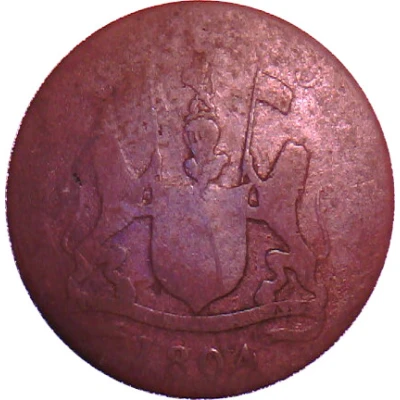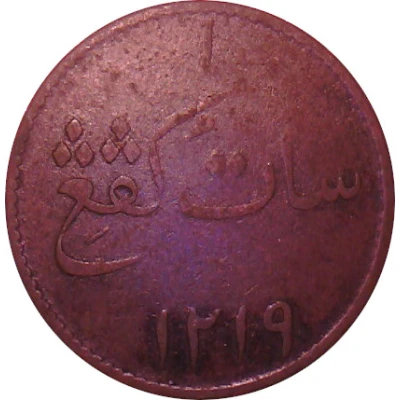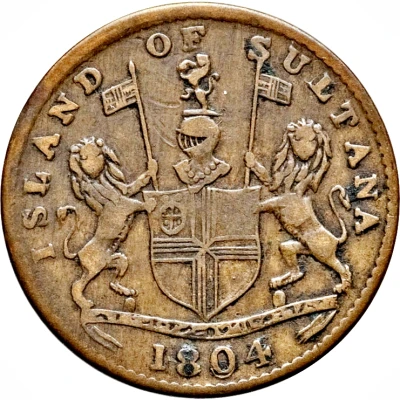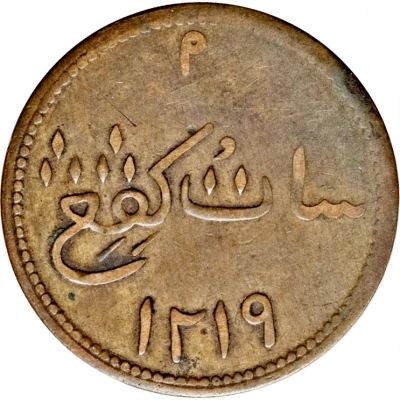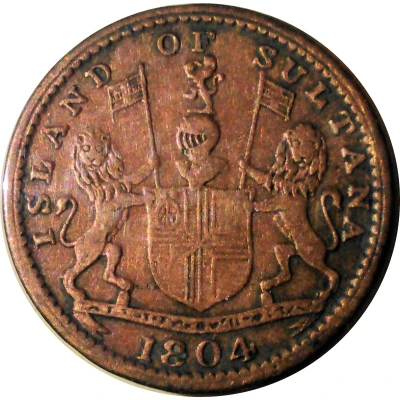
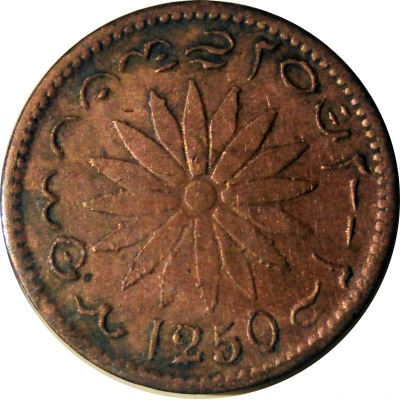

1 Keping Sultana
1804 year| Copper | - | 21.5 mm |
| Issuer | Sumatra (British East Indies) |
|---|---|
| Type | Token |
| Year | 1804 |
| Value | 1 Keping (1⁄400) |
| Currency | Dollar (1783-1824) |
| Composition | Copper |
| Diameter | 21.5 mm |
| Thickness | 1.4 mm |
| Shape | Round |
| Orientation | Medal alignment ↑↑ |
| Demonetized | Yes |
| Updated | 2024-10-04 |
| Numista | N#101469 |
|---|---|
| Rarity index | 87% |
Reverse
Flower with 16 petals, identified as a tanjung tree's (Mimusops elengi), with encircling Lontara' inscription. Date in western Arabic numeral at bottom. Beads around border.
Script: Lontara
Lettering:
ᨓᨊᨘᨓᨈᨊᨕᨘᨁᨗ ᨔᨙᨉᨗᨀᨙᨄᨙ
1250
Unabridged legend:
Wanuwa tana ugi sédi képé(ng)
1250
Translation:
Land of Bugis, one keping
AH 1250 (=AD 1834)
Comment
These coins were not official currency of any state. They were first issued in the early 1800s by British merchants at Singapore, to alleviate base coin shortage, before spreading to various parts of the Malay Archipelago. To circumvent confiscation attempts by colonial authorities (particularly the Dutch), British merchants use inscriptions that refer to locations that are vague, fictitious, or unaffiliated to Europeans. In this manner, legally it could not be argued that the tokens were intended for circulation in colonial territories.The token's "Island of Sultana" is a fictitious location. They were issued after a Dutch proclamation in 15th October 1835 to confiscate a previous issue with "Island of Sumatra" inscription.
See Singh (1986:445-449) for details.
Interesting fact
The A Token 1 Keping (Sultana) 1804 from Sumatra (British East Indies) made of Copper is a rare and valuable coin that is highly sought after by collectors. One interesting fact about this coin is that it was minted during a time of economic turmoil in the British East Indies, specifically during the Napoleonic Wars, which led to a shortage of official currency. As a result, private tokens like this one were issued by local merchants and traders to fill the gap and facilitate trade. This coin's unique history and rarity make it a fascinating piece for collectors and historians alike.
